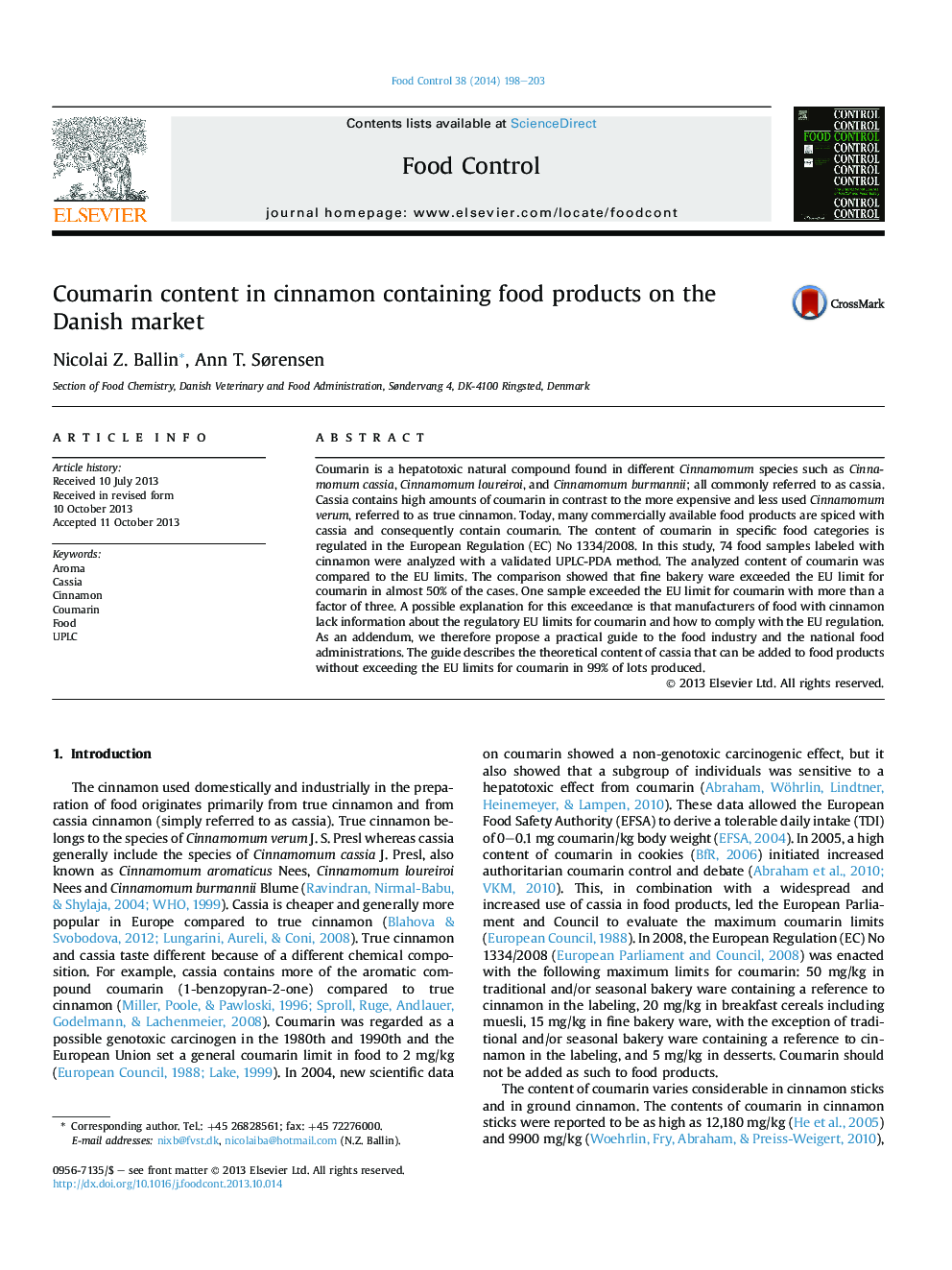| Article ID | Journal | Published Year | Pages | File Type |
|---|---|---|---|---|
| 6392074 | Food Control | 2014 | 6 Pages |
Abstract
Coumarin is a hepatotoxic natural compound found in different Cinnamomum species such as Cinnamomum cassia, Cinnamomum loureiroi, and Cinnamomum burmannii; all commonly referred to as cassia. Cassia contains high amounts of coumarin in contrast to the more expensive and less used Cinnamomum verum, referred to as true cinnamon. Today, many commercially available food products are spiced with cassia and consequently contain coumarin. The content of coumarin in specific food categories is regulated in the European Regulation (EC) No 1334/2008. In this study, 74 food samples labeled with cinnamon were analyzed with a validated UPLC-PDA method. The analyzed content of coumarin was compared to the EU limits. The comparison showed that fine bakery ware exceeded the EU limit for coumarin in almost 50% of the cases. One sample exceeded the EU limit for coumarin with more than a factor of three. A possible explanation for this exceedance is that manufacturers of food with cinnamon lack information about the regulatory EU limits for coumarin and how to comply with the EU regulation. As an addendum, we therefore propose a practical guide to the food industry and the national food administrations. The guide describes the theoretical content of cassia that can be added to food products without exceeding the EU limits for coumarin in 99% of lots produced.
Related Topics
Life Sciences
Agricultural and Biological Sciences
Food Science
Authors
Nicolai Z. Ballin, Ann T. Sørensen,
